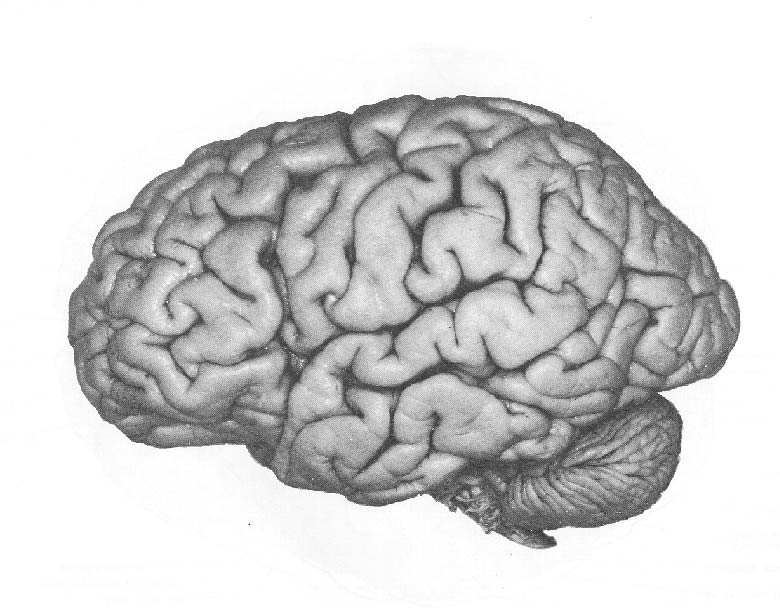


Several portions of the parietal lobe are important in language processing. Just posterior to the central sulcus lies the Postcentral Gyrus. This area of the cortex is responsible for somatosensation. This cortical region receives inputs from the somatosensory relays of the thalamus and represents information about touch, pain, temperature sense, and limb proprioception (limb position). The Postcentral Sulcus is immediately posterior of to the postcentral gyrus. The rest of the parietal lobe, posterior to the postcentral sulcus, is divided into upper and lower parts, called the Superior Parietal Lobule and the Inferior Parietal Lobule. The latter is of great linguistic importance. It includes two gyri that go around corners: the Supramarginal Gyrus, around the end of the Sylvian fissure, and the Angular Gyrus, around the end of the superior temporal sulcus. The telencephalon page describes the Sylvian fissure as dividing the temporal lobe from the other lobes; but now we see it's not quite that simple: The posterior portion of the Sylvian fissure usually turns upward and from about this point it goes up into the parietal lobe, so this posterior portion of the Sylvian fissure has the inferior parietal lobule on both sides of it.
© 2000 Rice University. This document, or any portion hereof, may be used for non-commercial informational purposes only. Any copy of this document, or portion hereof, must include the copyright notice (http://www.rice.edu/about/cr-notice.html) in its entirety.